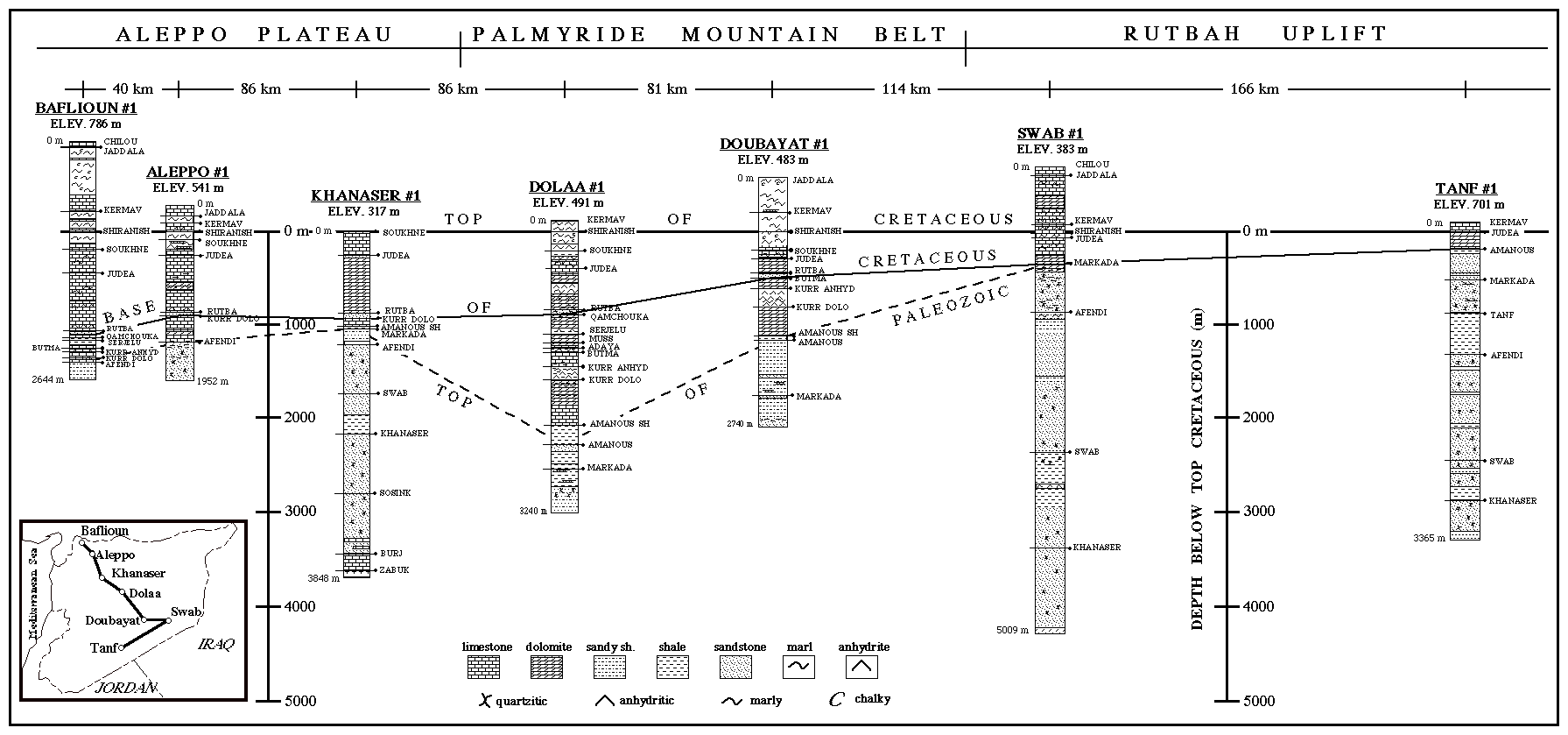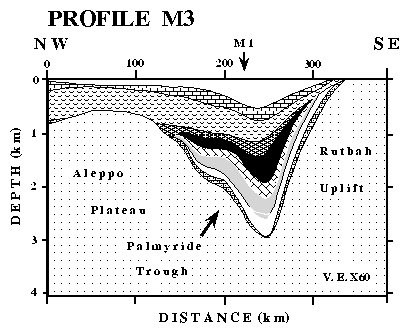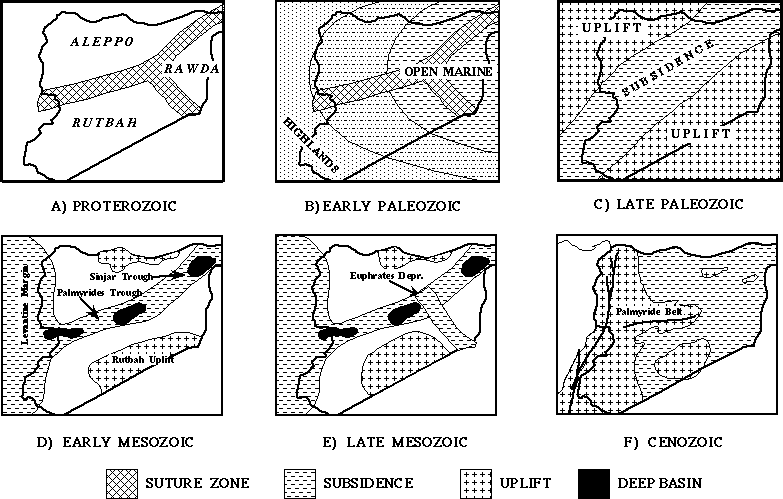Home | Results Summary | Publications | Participants | M.East / N.Africa Home
![]()
Synthesis of available geological and geophysical data in the Syrian Arab Republic permits a descriptive account of the pre-Cenozoic geologic history of the northern Arabian platform. The northern Arabian platform appears to be a composite plate similar to that interpreted in the rocks of the Arabian shield. The structural and stratigraphic relationships of the Paleozoic and Mesozoic sedimentary sections in Syria record the transformation of an east-facing Gondwanaland passive-margin in the early Paleozoic into a west-facing Levantine margin in the Mesozoic, at which time the northern platform was intimately associated with the creation of the eastern Mediterranean basin. Timing of the margin transformation is inferred from the orientation and thickness variations of Lower Triassic rocks, but the transformation may have initiated as early as the Permian. The diversity and timing of geologic features in Syria suggest that the northern Arabian platform did not behave as a rigid plate throughout its geologic history. The present-day Palmyride mountain belt located within the northern Arabian platform in Syria, initiated in early Mesozoic time as a northeast trending rift nearly perpendicular to the Levantine margin, was subsequently inverted in the Cenozoic by transpression. The location of the rift may be associated with the reactivation of a zone of crustal weakness, i.e., a Proterozoic suture zone previously proposed from modeling of Bouguer gravity data. Thus, the northern and southern portions of the Arabian platform have similarities in their geologic history during the Proterozoic and Paleozoic; however, the northern Arabian platform was intimately affected by Mesozoic rifting and the creation of the eastern Mediterranean basin during the Mesozoic.
Figure 1. Lithostratigraphic well correlation diagram oriented approximately NW-SE across the northern flank of the Arabian platform in Syria. Datum is top of the Cretaceous. Numbers on left side of individual stratigraphic columns represent drilling depths.

Figure 2. Paleozoic cross sections based on well control, profile P2. Locations of zero edges for the formations were based on interpretation of seismic reflection data. Datum represents base of the Mesozoic section. Observed variations in isopach thicknesses are interpreted as Paleozoic in origin. Wells located on cross sections are all non-producing wells.



Go back to Summary of Results
Go back to Cornell Syria Project Welcome Page